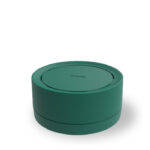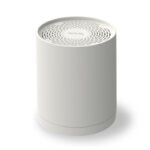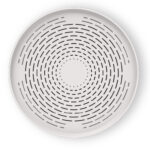The link between air pollution and the spread of viruses

Fine dust and increased infections

The Italian Society of Environmental Medicine (SIMA) and the Universities of Bologna and Bari analyzed the correlation between PM and the number of virus infections and infectious diseases.
Among the most affected areas were Wuhan in China, Po Valley and Lombardy in Italy, and New York City in the United States of America.
These are areas of high pollution, and it is no coincidence that in the past Sars-CoV-2 has spread more in these areas where the air is full of harmful substances, particularly fine particulate matter.
PMs act as a vehicle carrier for many chemical and biological contaminants, including viruses, thus promoting their instantaneous spread. They can absorb and transport contaminants, allowing them to travel long distances and reach new areas. Smaller particles can remain suspended in the air for longer periods of time and can travel greater distances than larger particles.
The exponential danger of particulate matter

Particulate matter is a pollutant consisting of dust, smoke and aerosols. These airborne substances manage to reach different parts of the respiratory system causing serious health damage.
The World Health Organization has estimated that fine dust is responsible for about 2 million deaths a year worldwide; 400 thousand in Europe; 70 thousand in Italy.
Viruses through a coagulation process, join particulate matter, which consists of particles that can remain in the atmosphere for hours, days or weeks, and can travel long distances.
These substances invisible to our eyes can penetrate through the nose and mouth, into the human respiratory tree, producing adverse health effects.
The more these particulates travel, the more contagions increase.
Not only that. The more one is exposed to dust over time , the greater the likelihood that the respiratory system will be predisposed to a more serious disease.
Why monitoring air quality can be so supportive

The risks associated with particulate matter can also extend to other parameters in the air we breathe daily such as carbon dioxide (CO2), volatile organic compounds (VOCs), temperature and humidity. Keeping track of these levels can benefit the health of occupants.
Monitoring allows better control over the safety and healthiness of workplaces, highlighting areas for potential improvement.
Good air quality, in addition to limiting health damage and contagions, optimizes occupants’ performance and cognitive performance.
An additional longer-term benefit is the prevention of any disease or disorder related to indoor pollution, particularly that of the respiratory system.
In fact, it has been observed that better overall individual health improves the response to any exposure to Covid-19.
People who breathe worse air therefore are more prone to respiratory disease, which in turn aggravates the clinical picture of those who become ill with Coronavirus or any other circulating virus.
These are the main reasons why air quality is critical to public health, as it can influence the spread of air contaminants, including viruses and other pathogens. Air pollution control measures and hygiene practices are of paramount importance in limiting the spread of such pathogens.







